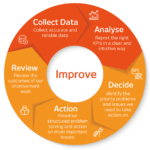Report Engagement, 10 essential lessons from spam email
I hate spam, so I am reading a book on marketing emails (Email Marketing Rules: A Step by Step Guide to the Best Practices that Power Marketing Success by Chad White) to figure out how to create engaging emails that people actually want to read and open. Reading the list I realised these rules hold the key for report engagement too. The principles Chad White lists for good email practice are…

Spam, best delivered tinned
-
While permission grants marketers access to inboxes, sending relevant messaging maintains that permission
- Subscriber’s time is far more valuable than the pittance it costs to email them. Relevance has to fill that cost-value gap.
- Use confirmed opt-in
- Focus on adding engaged subscribers to your list
- Set expectations regarding how many emails you’ll be sending subscribers and what content will be in them
- Include an unsubscribe link in all emails
- Pay special attention to subscribers during their first weeks on your list. This is when they are most likely to be engaged
- Design your emails with a clear content hierarchy so they can be easily scanned by subscribers (link to blog on formatting for target device)
- Don’t place anything important after the footer copy because subscribers are unlikely to see it
- Optimise the delivery time of your emails to increase their visibility of your emails to increase their visibility in the inbox
This got me thinking. The approach to creating engaging marketing emails and that for report engagement are very similar. In fact, an unwanted report email is spam – so these rules apply equally to internal reporting as to email marketing.
The rules for avoiding email spam and building KPI report engagement are almost identical
I have created a tweaked version of these rules with the intent of creating ‘report engagement’. In the rules below, when I talk about ‘customers’ I’m talking about the users of reports and dashboards.
- While permission grants report and dashboard producers access to their reporting customer’s attention, sending relevant material maintains that permission
- Report subscriber’s time is far more valuable than the minimal effort it takes to email them. Relevance has to fill that cost-value gap.
- Use confirmed opt-in – never send a report or dashboard as an email ‘cc’. Check periodically that your reporting customers still want the reports they are subscribed to.
- Aim to only add engaged subscribers to your report/dashboard circulation list – avoid sending reports ‘just in case’.
- Set expectations on how large and frequent reports will be. Better still add an ‘Estimated review time’ to the top of each report, showing how long it will take to read and digest the report or dashboard.
- Include an “unsubscribe from this report” link in all emails
- Supply extra ‘getting started’ information to report subscribers during their first weeks on your list – this is a good time to supply glossary information, background on assumptions and any other commentary that will help them make sense of the dashboards and reports. This is when they are most likely to be engaged and also the easiest period for them to become disengaged.
- Design your reports with a clear content hierarchy so they can be easily scanned by subscribers.
- Don’t place anything important in your report appendix because subscribers are unlikely to see it
- Optimise the delivery time of your reports and dashboards to increase relevance. Make sure that your customers have enough time to read and digest the content before the relevance decision making session, but not so long that they forget the content.
The reason that these emails rules map so easily to reporting, KPIs and dashboards is that KPIs, reports and dashboards are simply a specific type of content. The rules of engagement and permission are the same for almost all types of content. How can you expect report engagement (or any other sort) if you haven’t asked permission, take too much of their time and don’t delivery relevant content? So next time your internal clients complain about being bombarded with content – or more likely – simple demonstrate that they have not read the reports that they have received, it might be time to revisit these ten rules and see if you have followed the sound principles of relegance and value.






